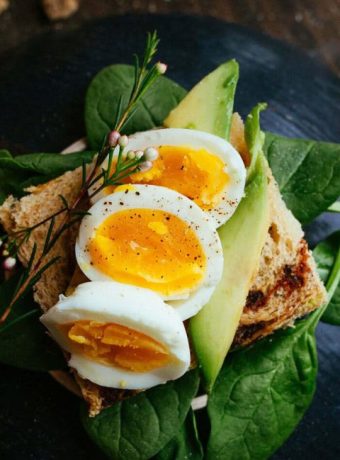Who This Guide is For:
This guide is for wives who want to deepen their emotional and physical connection with their husbands by understanding how marketing principles can enhance a marriage. If you feel like your relationship could use a boost, particularly after the changes that come with having children, or if you want to align better with your partner’s attachment style, this guide is for you. By using the 4 P’s of marketing—Product, Price, Place, and Promotion—you can tailor your approach to meet your husband’s emotional needs and create a more fulfilling partnership.
Before You Start:
Understanding your partner’s attachment style can transform the way you connect in your marriage. Whether you or your husband lean towards secure, anxious, avoidant, or fearful attachment, aligning your efforts to these styles can help build trust, intimacy, and satisfaction. Just as in marketing, where a personalized strategy attracts loyal customers, applying a tailored approach to your relationship will foster a deeper bond.
1. Product: Understanding Your Marriage as a ‘Product’
In the context of marriage, the “product” is the relationship itself—how you and your partner connect emotionally, physically, and mentally. Just like in marketing, where a product must meet the needs of the target audience, your marriage needs to be nurtured in a way that aligns with both partners’ attachment styles.
For Secure Attachment: Focus on maintaining consistency and reliability. Your husband likely appreciates the stability and trust you bring to the relationship, so continue to invest in quality time and affirming actions that keep that bond strong.
For Anxious Attachment: Your husband might need more frequent reassurance. Small gestures like unexpected hugs, thoughtful notes, or verbal affirmations can make him feel valued and connected.
For Avoidant Attachment: A husband with this style may appreciate more space and independence. The “product” here isn’t constant closeness but rather the security that comes from knowing you’re there when he’s ready to connect.
For Fearful-Avoidant Attachment: This style benefits from a balance of closeness and space. Focus on creating a safe environment where your husband feels comfortable expressing his needs without pressure or judgment.
Action Step: Identify what “product features” your husband values most in your relationship. Is it quality time, physical touch, acts of service, or words of affirmation? Tailor your efforts to enhance those features.
2. Price: Investing in Your Relationship
In marketing, price isn’t just about cost; it’s about value exchange. In a marriage, “pricing” refers to the time, effort, and emotional energy you invest in the relationship. Just as a business must determine what its customers value enough to pay for, you must assess what your partner needs to feel valued.
For Secure Attachment: Your husband likely values a balanced give-and-take. Investing time in shared activities or meaningful conversations is the “price” he appreciates most.
For Anxious Attachment: He might need more reassurance and consistent attention. Regularly checking in with him, planning date nights, or engaging in small, affectionate gestures can pay dividends.
For Avoidant Attachment: Respecting his need for space can be the “price” he values most. Give him time to recharge, and focus on creating quality moments rather than constant engagement.
For Fearful-Avoidant Attachment: The investment here is about patience and understanding. It may take time for him to fully trust, so consistently showing up without overwhelming him can build a sense of security.
Action Step: Reflect on where you’re investing your time and energy in the relationship. Is it aligned with what your husband values? Consider adjusting how you “spend” your emotional resources to match his attachment needs.
3. Place: Creating the Right Environment for Connection
In marketing, “place” is about distribution—getting the product to the customer where they are. In marriage, it’s about creating the right setting and opportunities for emotional and physical intimacy to flourish.
For Secure Attachment: Keep fostering a comfortable, open environment where communication flows naturally. This might mean setting aside regular, undistracted time to connect over a meal or a walk.
For Anxious Attachment: Ensure that the environment feels safe for him to express his feelings. This could mean turning off distractions, like phones, and focusing entirely on him during conversations.
For Avoidant Attachment: Respect his preference for low-pressure settings. Instead of forcing deep conversations, opt for relaxed environments like a drive or a casual activity where he feels less on the spot.
For Fearful-Avoidant Attachment: Balance is key. Create environments where he feels comfortable opening up but can also retreat if he feels overwhelmed. Allowing him to have alone time when needed can be just as important as being available for deeper connection.
Action Step: Think about where and when your best conversations and connections happen. Is it during a shared activity, over dinner, or even before bed? Use these moments as your “place” to nurture your bond.
4. Promotion: Consistently Reinforcing Your Connection
Promotion in marketing is about communicating the value of your product to the target audience. In marriage, “promotion” is about communicating your love, appreciation, and commitment to your partner. The key is to align your approach to his attachment style so he truly feels the message.
For Secure Attachment: Regularly affirm your love through both words and actions. A handwritten note, a surprise date night, or simply saying, “I appreciate you” can keep the connection strong.
For Anxious Attachment: Consistent reassurance is crucial. Sending a quick text during the day or planning something special can go a long way in easing his worries.
For Avoidant Attachment: Avoid overwhelming gestures. Instead, focus on subtle, steady ways to show your appreciation, like respecting his boundaries or giving him a thoughtful gift that aligns with his interests.
For Fearful-Avoidant Attachment: He may need a mix of clear, consistent expressions of love but without too much intensity. A quiet “I love you” when he’s least expecting it or small acts of kindness can help him feel secure without feeling pressured.
Action Step: What’s one “promotional campaign” you can launch in your marriage? This could be a weekly gratitude ritual, a spontaneous surprise, or simply prioritizing more frequent affirmations to keep the bond strong.
Putting It All Together: Building a Marketing Strategy for Your Marriage
By aligning the 4 P’s of marketing with your husband’s attachment style, you can create a personalized approach that enhances your relationship. Remember, just like in business, there’s no one-size-fits-all strategy. Adjusting your efforts based on your husband’s needs, attachment style, and emotional preferences will help foster a deeper connection that feels fulfilling for both of you.
Whether it’s fine-tuning the “product” of your marriage, investing in the “price” of time and effort, finding the right “place” to connect, or “promoting” your love in ways that resonate—these principles can guide you to a stronger, happier partnership.
How To Use This Guide:
Take a moment to identify your husband’s attachment style, and then focus on one area to improve. Start small, whether it’s adding a few minutes of undistracted conversation time (Place) or sending a quick note of appreciation (Promotion). The goal is not perfection but consistent, meaningful efforts to keep your marriage thriving.



